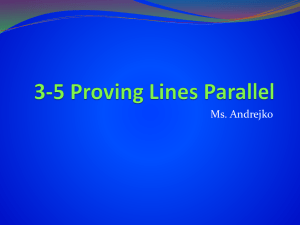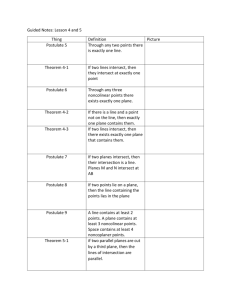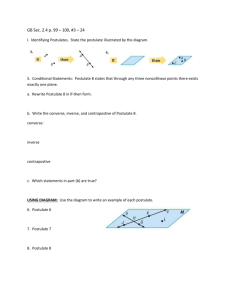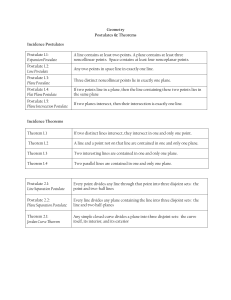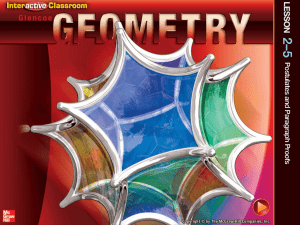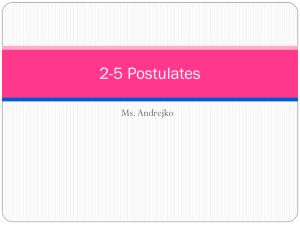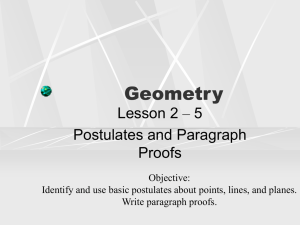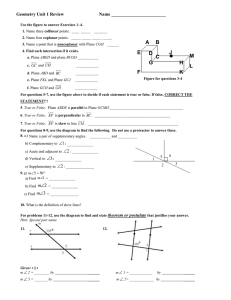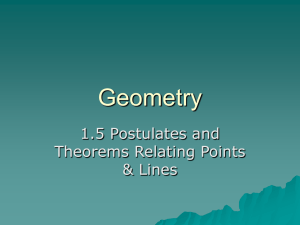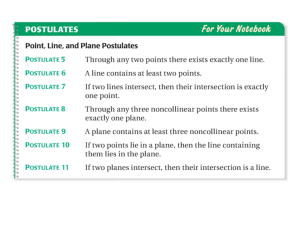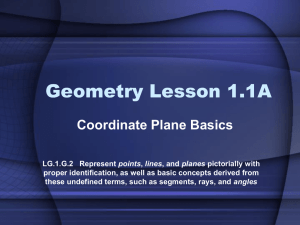plp 2
advertisement
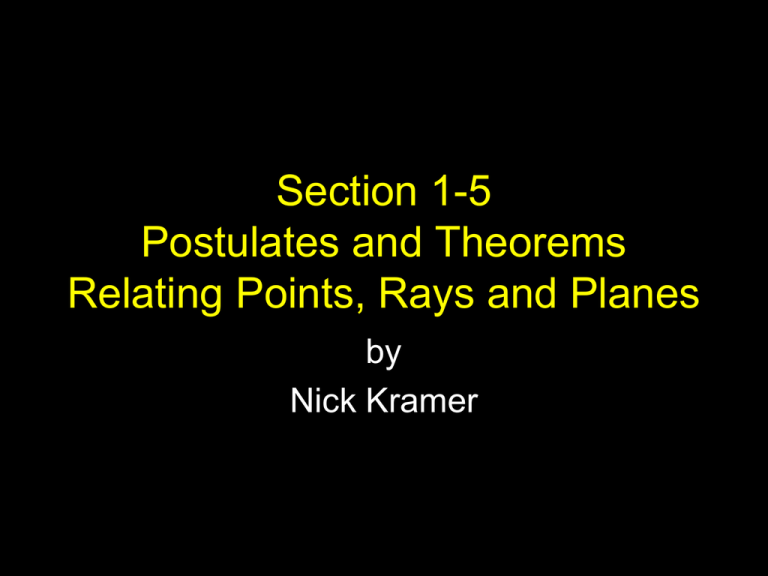
Section 1-5 Postulates and Theorems Relating Points, Rays and Planes by Nick Kramer Goal 1. Use symbols for Lines, Segments, Rays and Distances; Find Distances. 2. Name the Angles and Find their Measurement. 3. State and Use The Segments Addition Postulate and The Angle Addition Postulate. 4. Recognize what you can conclude from a Diagram. 5. Use the Postulates and Theorems relating Points, Lines and Planes. Postulates A postulate is an assumed relationship that is seen in the world around us. They are not always reversible Postulate 5 A line contain at least two (2) points; A Plane contains at least three points not all in one line; Space contains at least four points not all in one plane. Postulate 6 Through any two points there is exactly one line. Postulate 7 Through any three points three is at least one plane; through any three noncollinear points there is exactly one plane. Postulate 8 If two points are in a plane, then the line that contains the points is in that plane. Postulate 9 If two planes intersect, then their intersection is a line Theorems • A theorem is statements that can be shown to be true by a logical progression of preexisting definitions, postulates, and theorems. Proving a Theorem Proving a theorem is the process of showing the validity of a theorem Theorem 1-1 If two lines intersect, then they intersect in exactly one point. Theorem 1-2 Through a line and a point not in the line there is exactly one plane. Theorem 1-2 Theorem 1-3 If two lines intersect, then exactly one plane contains the lines. Theorem 1-3
